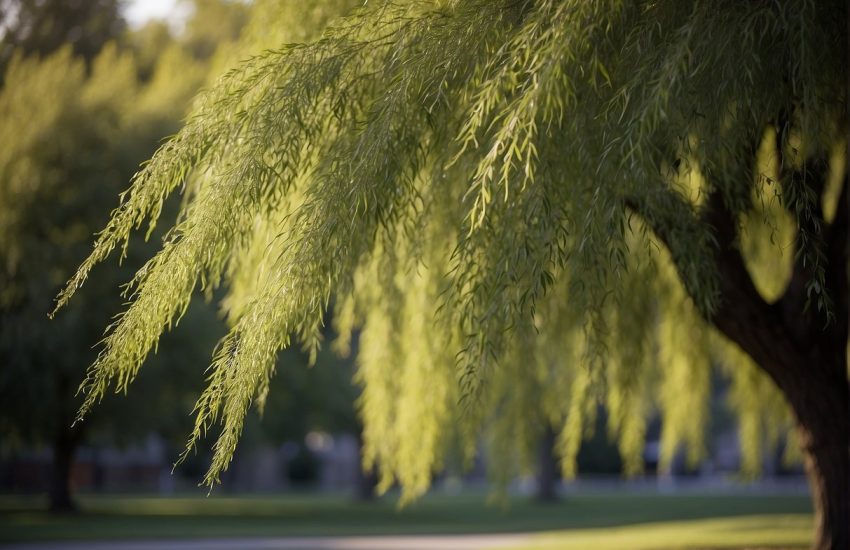Is Locust Good for Firewood – Burning Locust Firewood
Locust is a type of hardwood that is often used for firewood. It is one of the densest woods available and burns hot and slow. This makes it an ideal choice for a fireplace or wood-burning stove. In addition to their high heat output, Locust also produces very little smoke. This means that it is less likely to cause problems for people with respiratory conditions. And because it burns so slowly, Locust is also a good choice for overnight fires. Here is a detailed examination of Locust trees when used as firewood.

Common Characteristics of Locust Firewood
The Locust tree is a fast-growing, deciduous tree native to North America. Locust trees are highly valued for their wood, which is extremely strong and durable. The tree’s thick roots also make it resistant to drought and erosion. Locust trees can grow up to 100 feet tall, with a trunk diameter of up to four feet. The wood is hard and dense, making it ideal for firewood. It burns hot and slow, giving off more heat than other types of wood. Locust trees are also good for fence posts, furniture, and railroad ties. The tree’s resistance to rot makes it an excellent choice for these applications. In addition, locust trees are relatively fast-growing, making them a sustainable source of wood.
Types of Locust Trees Used as Firewood
Most locust trees are tough and durable, making them ideal for firewood. The wood is dense and burns hot, providing a long-lasting fire that is perfect for cold weather. The best type of locust tree for firewood is the Black Locust. This tree is native to North America and can grow up to 50 feet tall. The wood is dark brown or black and has a distinctive grain pattern. Black locust wood is also one of the most rot-resistant woods, making it an excellent choice for outdoor use. Another good option for firewood is the Honeylocust tree. This tree is also native to North America and can grow up to 70 feet tall. The wood is light brown with a coarse grain. Honeylocust wood is not as resistant to rot as black Locust, but it still makes a good choice for firewood. Honeylocust trees are also very hardy and can withstand drought and cold temperatures. Finally, the black gum tree is another type of locust tree that can be used for firewood. These trees are native to Africa and can grow up to 150 feet tall. They have dark bark and small, oval-shaped leaves. Black gum trees are not as hardy as black Locust or honeylocust trees, but they can withstand drought and cold temperatures.
Seasoning Locust Firewood
Seasoning firewood is important because it reduces the moisture content, which makes the wood light easier to transport and burn more efficiently. Locust trees are well known for their hard, dense wood that burns hot and slow and produces a lot of coal, making them an excellent choice for firewood. But to get the best results, it’s important to season the wood properly. The first step is to cut the logs into uniform lengths, typically between 18 and 24 inches. This will make them easier to stack and help them dry evenly. Next, split the logs into smaller pieces using a maul or an axe. This will speed up the drying process by increasing the surface area exposed to the air. Finally, stack the wood in a dry, sheltered location and allow it to cure for at least six months before using it for fuel.
Heat Output and Efficiency
Several factors impact the heat production and efficiency of locust firewood in BTUs. The type of tree that the wood comes from is one of the most important factors. Locust trees are typically very hard, dense woods, producing more heat and BTUs than softer woods. How the wood is cut and seasoned also plays a role in its efficiency. If the wood is cut into larger pieces, it will burn more slowly and evenly, resulting in less wastage. If it is cut into smaller pieces, it will burn more quickly but may not provide as much consistent heat. Proper seasoning is also essential for optimal results. Seasoning removes moisture from the wood and makes it easier to light and burn. As a result, it produces more heat and BTUs than unseasoned wood. Black locust trees are up there with the highest-rated BTU trees, with a rating of 27.5-29.8 depending on the growing condition of the tree.
On the other hand, Honey Locusts have a BTU rating of 26.7, which is higher than most trees. In general, locust firewood is an excellent choice for those looking for a reliable source of heat. Proper care and preparation can provide consistent warmth and long-lasting results.
How much smoke do they produce?
It turns out that the answer to this question depends on several factors, including the type of wood and the way it is burned. In general, however, locust wood produces less smoke than other types of wood. This is because locust wood contains less tar than other woods, which means that it burns more cleanly. As a result, it is often recommended for use in smokers and other devices where smoke production is a concern. Additionally, seasoned firewood will produce less smoke as compared to unseasoned firewood. As such, it is important to always season or kiln-dry Locust if you are looking to use it as firewood.
Does it Spark
In short, yes. Locust firewood does produce sparks when burned. The primary reason for this is that locust wood is denser than other types of firewood, such as pine or oak. As a result, it burns slower and hotter, which can cause embers to break off and float up out of the fireplace. In addition, the resin content of locust wood can also contribute to sparking. However, there are a few things that you can do to help minimize the risk of sparks. First, make sure that your fireplace is clean and free of debris. Second, soak your locust wood in water for at least an hour before burning it. This will help to reduce the resin content and make the wood easier to burn. Finally, use a metal fire screen when burning locust wood in your fireplace. This will help to contain any sparks that do escape.
Creosote Buildup
Locust is a type of hardwood known for producing very little creosote when properly seasoned. Creosote is a tar-like substance that can build up inside chimneys and must be cleaned regularly. Honey locust wood burns clean because it contains low amounts of resin and sap. This makes it an ideal choice for those who want to avoid the hassle of having to clean their chimney regularly. If you are looking for a type of wood that burns clean and produces very little creosote, Locust is a great option to consider.
Pros
- Long Lasting
One of the biggest advantages of locust firewood is it is long-lasting. This type of wood is extremely dense, making it much more difficult for insects to bore into and break down. As a result, your firewood will last much longer when made from locust wood.
- Good Heat Output
Another advantage of locust firewood is that it has a very good heat output. Locust firewood has one of the highest BTU ratings per cord. This means that you can get more heat from your firewood when burning locust wood as opposed to other types of wood.
- Low Smoke
Thirdly locust firewood produces very little smoke when burned. This is because locust wood is very dry and has a low moisture content. As a result, you won’t have to worry about your clothes or furniture getting covered in smoke when burning locust wood.
- Easy to Split
it should also be noted that locust firewood is very easy to split. This type of wood is very strong and durable, making it easy to split into smaller pieces with an axe or hatchet. As a result, you’ll be able to get your firewood ready for use much faster when using locust wood.
Cons
- Heavy
Locust firewood is one of the heaviest woods available, making it difficult to transport and store. This can increase transportation costs adding to the cost of the firewood.
- Locust Firewood is More Difficult to Light
One of the primary disadvantages of locust firewood is that it is more difficult to light than other types of wood. This is because locust wood has a high density, making it harder for oxygen to penetrate and ignite the wood. As a result, it can take longer to get a locust fire going, and you may need to use more kindling than you would with other types of wood.
Bottom Line
Locust firewood is one of the best firewood to use. It lights easily, burns hot, and produces very little smoke. In addition, Locust has a long burning time, making it a great choice for those who like to spend hours around the campfire. Although this type of wood can be difficult to find in some areas, it is definitely worth seeking out if you have the opportunity.


